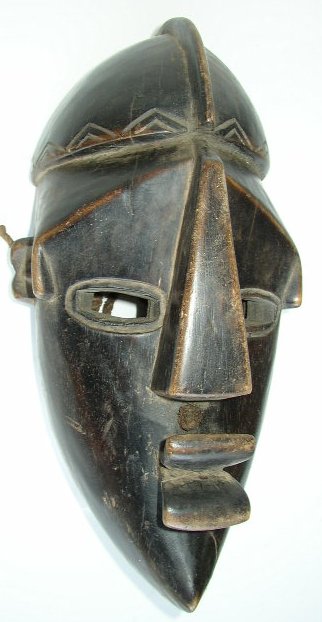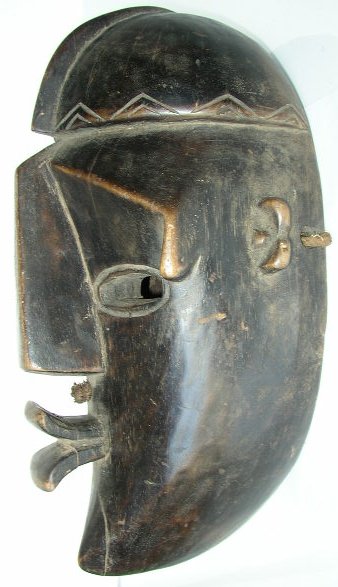 Lwalwa (Balualua, Balwalwa, Lwalu), Democratic Republic of the
Congo and Angola
Lwalwa (Balualua, Balwalwa, Lwalu), Democratic Republic of the
Congo and Angola
Male nkaki ceremonial mask. . The land where 20,000 Lwalwa live is rich and fertile, lending
itself well to the agricultural economy of the people. Lwalwa art, known mostly by its masks, is the most
original in a group of tribes located in the region where the Kasai River marks the border
between Zaire and Angola. Sculpting is recognized as a prestigious profession and
is usually passed on from father to son. Sculptors are a privileged caste of the community
and the Lwalwa are renowned dancers. Masks play an important role in the lives of the
Lwalwa. There are four types of masks, three masculine, including the present nkaki mask and one feminine. The masks had an
important function in the bangongo dance of the hunting ritual. When hunters returned empty-handed, the spirits of the
forest would be appeased by organizing a dance. The
masks were also used in a secret ritual of the bangongo society, in charge
of initiation and circumcision of young men. The choreography of masked dances was highly
complex and had to appease the spirits of the ancestors and compel them to intervene.
Masks still play a role today in secular festivities.
Material: wood
Size: H. 15”, W. 7½”, D.
7½”

 Lwalwa (Balualua, Balwalwa, Lwalu),
Lwalwa (Balualua, Balwalwa, Lwalu),  Lwalwa (Balualua, Balwalwa, Lwalu),
Lwalwa (Balualua, Balwalwa, Lwalu), 